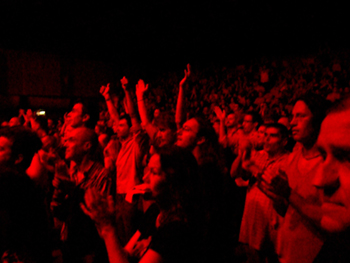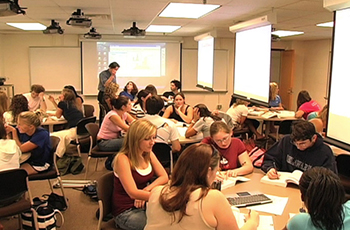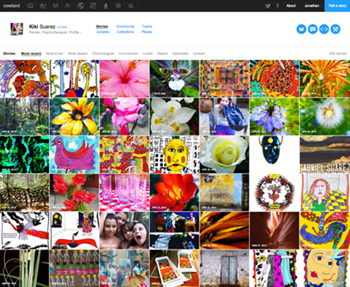





Sheridan, Ridolfo, and Michel began their book by teasing out connotations of kairos. The working definition they used demonstrates a relationship between the rhetor and multifaceted contexts, thus emphasizing the need for each rhetor to exercise a practice of theory by being inventive as kairotic moments emerge. Though the authors believe that each rhetor has a sense of agency, they were “skeptical” of the ability of rhetors to fully manipulate kairotic moments—in large part due to the complex socio‐politico‐historical contexts that shape the eras and places these rhetors inhabit (p. 11). For example, rhetorical success could be contingent upon networks of human and nonhuman actors or could be limited by access to digital tools and the people who teach how to use these tools. This acknowledgement of the limitations of agency and contingent socio‐politico‐historical contexts is critical in a book that addresses public rhetoric, especially a public rhetoric that is situated against the authors’ dynamic description of a public sphere.
In addition to kairos, Sheridan, Ridolfo, and Michel looked at the significance of the public sphere, as developed by Jürgen Habermas (1989), and began with a critique of its popular, liberal understanding. The authors' critiques included concerns with ontology, accessibility, production, the nature of discourse, and the nature of agency. While the public sphere for Habermas was a place for elite men to come to rational conclusions based on discussion, the authors of this book maintained that opportunities for the public sphere are much richer in that a multitude of people can express their identities and desires in complex spaces. Thus, Sheridan, Ridolfo, and Michel moved to a “kairotic approach to public rhetoric” (p. 20, emphasis added) to frame their arguments, meaning a rhetor from this diverse public sphere should, ideally, be able to asses a situation and determine what rhetorical action should be taken.
By orienting readers to these terms, the authors then explored abstract and concrete examples of multimodal public rhetorics by rhetors engaged with invention practices in order to address “public exigencies” (p. 50). For example, the authors presented a case study of a documentary project Ridolfo made about the 2003 Free Trade Area of the Americas protest in Miami. Many rhetorical decisions related to kairos and public exigencies were executed in the making of this multimodal composition, including decisions regarding the mode and genre of production, considerations of reproduction—Ridolfo expected and even hoped audience members would use excerpts from the documentary for their own purposes—and considerations of circulation: What media format would allow for the documentary to circulate widely?
Related to the ideas of circulation and reproduction, Sheridan, Ridolfo, and Michel presented rhetorical velocity and recomposition as considerations for rhetors practicing multimodal public rhetorics. The authors wanted their readers to consider not only the act of invention before a composition is made, but what comes after a composition is produced and is circulated through human and nonhuman networks. In other words, as in the case of Ridolfo’s documentary and in the case of stock news footage, how can a rhetor anticipate how and where their compositions may be remixed and recirculated? If operating within a public framework, the authors claimed that issues of ethics, access, and even an understanding of rhetoric itself are expanded if a rhetor keeps these considerations in mind while composing. For example, ethics of authorial intent should be considered when repurposing a photojournalist’s image (pp. 94–96); issues of access are at stake if considering in what media a composition should be circulated, as in Ridolfo’s case; and notions of rhetorical practices are expanded when one considers rhetoric as being comprised of previously marginalized concepts like circulation.
Throughout the book, the authors turned their attention to the composition classroom and outlined what a classroom focused on public rhetorics might look like (pp. 116–117). Such pedagogies included having students critically reflect on how different modalities affect different purposes and audiences, and how production and recomposition practices function rhetorically. Students can also reflect on, and perhaps confront, material realities of access to different multimodal technologies and spaces while composing—or not—in particular multimodal formats and spaces. Issues of agency, which surfaced in these classrooms as material, cultural, and historical networks, are navigated by students who must negotiate which technologies, relationships, and spaces they can shape, to what degree, and which they cannot. Furthermore, the authors were quick to acknowledge that while this type of classroom teaches students rhetorical strategies, there is also a process of normalizing and marginalizing in such classrooms as instructors choose what they can and do teach. However, Sheridan, Ridolfo, and Michel emphasized that the classroom engaged with multimodal public rhetorics highlights students as producers of cultural knowledge; thus, their potential for agency rises.
In the intermediate writing class I teach, students engage with public rhetorics. For example, students will write a personal literacy narrative in alphabetic form. This text will be reviewed by classroom peers and myself, and its purposes include exploring course themes while also practicing the rhetorical features of the personal narrative genre. Students will then revise, or reproduce, this alphabetic literacy narrative with multiple media so that the narrative can then be published either on Cowbird.com or at the Digitial Archive of Literacy Narratives. Students choose the platform to publish with; thus, as they consider sharing their work with a broader public sphere, they also make the rhetorical choices about which technological tools to use, which audience they want to showcase their work for, as well as which elements of their original narrative will be included, disregarded, or represented anew. Furthermore, as with many institutions of higher learning, my students and I face some issues of access, as the computer lab in which our class meets does not have the video or audio recording or editing software, such as iMovie or GarageBand, or hardware, such as microphones, needed for the multimodal version of the project. However, this issue of access can also be navigated as we will move across campus to a better‐equipped lab for the duration of this project. As Sheridan, Ridolfo, and Michel emphasized, this is a project where I believe students' agency has the potential to rise.